Hyundai i20 vs Suzuki Swift – Suorituskyky, toimintamatka ja kulutus vertailussa
Vertaa suorituskykyä, tavaratilaa, kulutusta ja hintaa yhdellä silmäyksellä.
Ota selvää, kumpi auto on sinulle parempi valinta – Hyundai i20 vai Suzuki Swift?
A Clash of Hatchbacks: Hyundai i20 vs Suzuki Swift
In the ever-popular hatchback segment, the Hyundai i20 and Suzuki Swift stand out as contenders vying for the attention of urban drivers seeking agility, efficiency, and style. Both models have undergone recent updates for the 2024 model year, featuring interesting developments in performance and technology. Let's dive into a detailed comparison of these two city cruisers to help you make an informed choice.
Engine and Performance
The Hyundai i20 offers a wider choice with its two engine types: a 1.0-liter petrol MHEV and a 1.2-liter petrol engine. The power output ranges from 79 HP to 100 HP, coupled with torque figures from 113 Nm to 200 Nm, offering decent versatility and performance for city and highway driving. The i20 also provides two transmission options – a manual gearbox and a dual-clutch automatic for smoother transitions, handling front-wheel drive only.
On the other hand, the Suzuki Swift comes standard with a 1.2-liter petrol MHEV engine producing 82 HP and 112 Nm of torque. Though less powerful than the i20, the Swift is available with both front-wheel drive and all-wheel drive, offering an edge in varied driving conditions. Transmission options include a manual gearbox and a CVT for those who prefer a more effortless drive.
Fuel Efficiency and Environmental Impact
When it comes to fuel economy, the Suzuki Swift takes the lead with consumption figures as low as 4.4 L/100km, making it more economical than the i20, which averages around 5.1–5.3 L/100km. Additionally, the Swift falls within the C CO2 efficiency class with emissions ranging from 98 to 110 g/km, while the i20 lands in the D class with emissions between 117 and 120 g/km. This makes the Swift a more environmentally friendly option.
Design and Dimensions
Both hatchbacks maintain their signature compact look, yet there are distinct differences in dimensions and cargo space which might influence your decision. The Hyundai i20 is slightly larger, measuring up to 4075 mm in length and offering a superior trunk capacity of 352 liters. This makes it a provisional winner for those who frequently need more cargo space.
Conversely, the Suzuki Swift, though more compact at 3860 mm in length, is designed for efficiency and agility in tight urban spaces. The Swift’s trunk capacity is 265 liters – smaller than the i20 but adequate for everyday use.
Interior and Features
Both vehicles comfortably seat five people and offer modern-day connectivity and infotainment features, accommodating the tech-savvy driver. However, the Hyundai i20's slightly larger cabin dimensions contribute to a roomier interior experience, especially for rear-seat passengers.
Conclusion
If you prioritize fuel efficiency, a smaller footprint for city maneuverability, and the potential of all-wheel drive, the Suzuki Swift makes a compelling case. However, for those who need a bit more power, larger cargo space, and a broader range of internal combustion options, the Hyundai i20 stands out as a strong choice.
Ultimately, both hatchbacks bring their unique advantages to the table. Your choice will depend on your specific needs, driving style, and personal priorities.
Tässä mennään yksityiskohtiin: tekniset erot tarkemmin
Kustannukset ja kulutus: Hinta ja tehokkuus ovat usein ensimmäiset valintakriteerit auton ostossa. Tässä näkyy, kumpi malli on pitkällä aikavälillä edullisempi – tankatessa, ladatessa tai hankintahinnassa.
Suzuki Swift on hinnassa melkein huomaamaton edullisempi – sen lähtöhinta on 20000 €, kun taas Hyundai i20 maksaa 20300 €. Ero on noin 300 €.
Polttoaineenkulutuksessa näkyy ero: Suzuki Swift kuluttaa 4.40 L ja on siten jonkin verran taloudellisempi kuin Hyundai i20, jonka kulutus on 5.20 L. Ero on noin 0.80 L /100 km.
Moottori ja suorituskyky: Moottorin alta paljastuu, kumpi malli on urheilullisempi ja kiihtyy paremmin.
Moottoritehossa Hyundai i20 on vähän etulyöntiasemassa – 100 hv verrattuna 82 hv:een. Ero on noin 18 hv hv.
Huippunopeudessa Hyundai i20 on kevyt edellä – se yltää 183 km/h:een, kun taas Suzuki Swift saavuttaa 170 km/h. Ero on noin 13 km/h.
Vääntömomentissa näkyy myös ero: Hyundai i20 vetää merkittävä voimakkaammin, 200 Nm verrattuna 112 Nm:een. Eroa on noin 88 Nm.
Tila ja käytännöllisyys: Sisätilat, tavaratila ja kantavuus ratkaisevat auton arjen käytettävyyden. Mukavuus ja joustavuus ovat avainasemassa.
Molemmissa autoissa on tilaa 5 henkilölle.
Omapainossa Suzuki Swift on tuskin havaittava kevyempi – 1069 kg verrattuna 1088 kg:een. Painoero on noin 19 kg.
Tavaratilan koossa Hyundai i20 tarjoaa huomattava enemmän – 352 L verrattuna 265 L:een. Ero on noin 87 L.
Maksimikantavuudessa Hyundai i20 pärjää pienessä määrin paremmin – jopa 1165 L, noin 185 L enemmän kuin Suzuki Swift.
Kantavuudessa Hyundai i20 on erottuva parempi – 472 kg verrattuna 296 kg:een. Ero on noin 176 kg.
Yhteenvetomme: Hyundai i20 osoittautuu olevan hallitsee vertailua ja saa siksi tittelin DriveDuel Champion!
Tässä vertailussa Hyundai i20 on monipuolisempi kokonaisuus.
Hyundai i20
Hyundai i20 on kompakti auto, joka yhdistää tyylikkään muotoilun ja käytännöllisyyden. Sen sisustus tarjoaa modernit ominaisuudet ja mukavuutta päivittäisessä ajossa. i20:n ajettavuus tekee siitä erinomaisen valinnan niin kaupunkisopeutumiseen kuin pidemmillekin matkoille.
Tiedot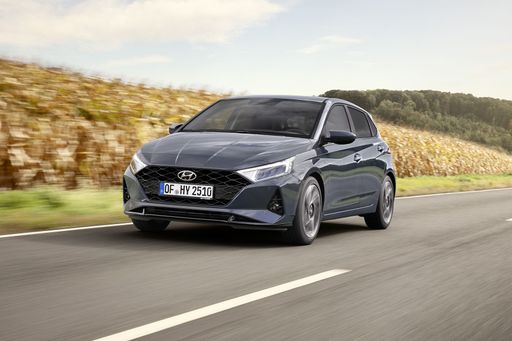 @ hyundai.news
@ hyundai.news
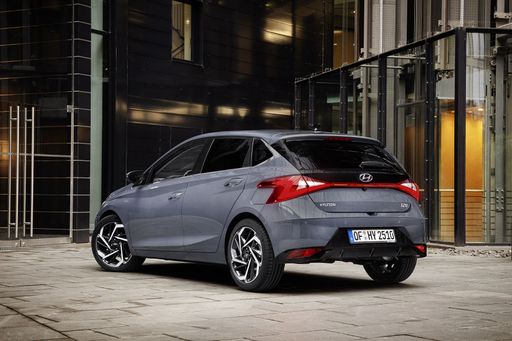 @ hyundai.news
@ hyundai.news
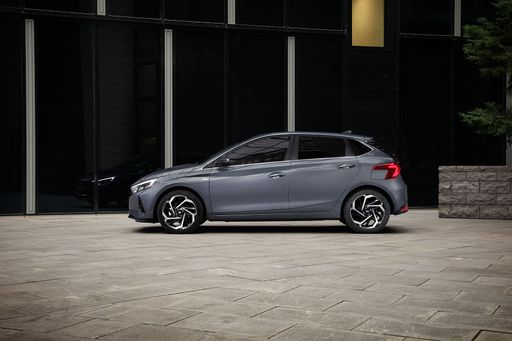 @ hyundai.news
@ hyundai.news
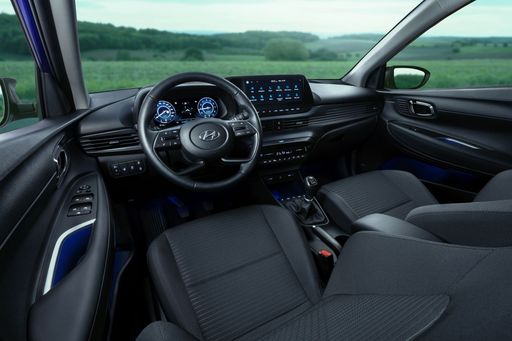 @ hyundai.news
@ hyundai.news
 @ hyundai.news
@ hyundai.news
Suzuki Swift
Suzuki Swift on valtakunnallisesti tunnettu kompakti hatchback, joka yhdistää tyyliä ja käytännöllisyyttä. Sen viehättävä muotoilu ja ketterä ajettavuus tekevät siitä erinomaisen valinnan kaupunkiliikenteeseen. Lisäksi Swiftin hyvin suunniteltu sisustus tarjoaa mukavuutta ja toimivuutta kaikille matkustajille.
Tiedot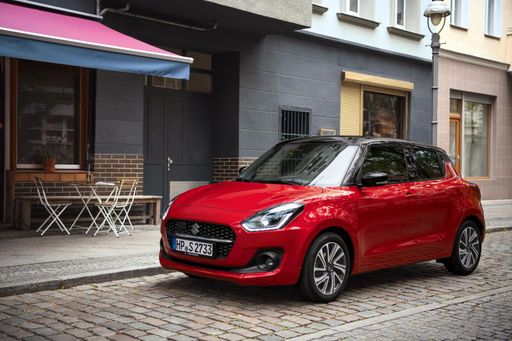 @ Suzuki
@ Suzuki
 @ Suzuki
@ Suzuki
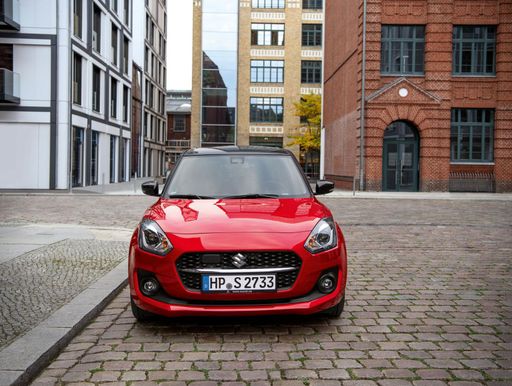 @ Suzuki
@ Suzuki
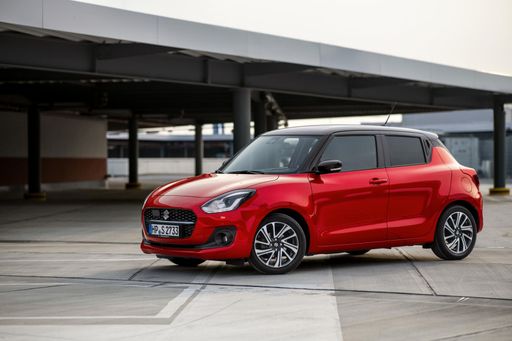 @ Suzuki
@ Suzuki
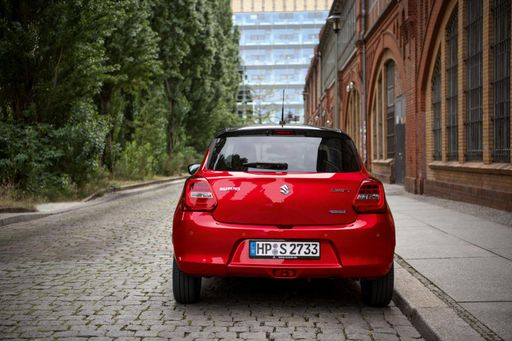 @ Suzuki
@ Suzuki
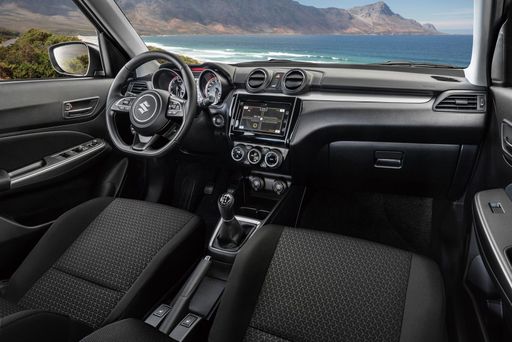 @ Suzuki
@ Suzuki

|

|
|
|
|
Kustannukset ja kulutus |
|
|---|---|
|
Hinta
20300 - 28000 €
|
Hinta
20000 - 24800 €
|
|
Kulutus L/100km
5.2 - 5.3 L
|
Kulutus L/100km
4.4 - 4.9 L
|
|
Kulutus kWh/100km
-
|
Kulutus kWh/100km
-
|
|
Sähköinen toimintasäde
-
|
Sähköinen toimintasäde
-
|
|
Akun kapasiteetti
-
|
Akun kapasiteetti
-
|
|
CO2
119 - 121 g/km
|
CO2
98 - 110 g/km
|
|
Polttoainesäiliön tilavuus
40 L
|
Polttoainesäiliön tilavuus
37 L
|
Mitat ja kori |
|
|---|---|
|
Kori
Hatchback
|
Kori
Hatchback
|
|
Istuimet
5
|
Istuimet
5
|
|
Ovet
5
|
Ovet
5
|
|
Omamassa
1088 - 1190 kg
|
Omamassa
1069 - 1145 kg
|
|
Tavaratila
352 L
|
Tavaratila
265 L
|
|
Pituus
4065 - 4075 mm
|
Pituus
3860 mm
|
|
Leveys
1775 mm
|
Leveys
1735 mm
|
|
Korkeus
1450 - 1455 mm
|
Korkeus
1485 - 1510 mm
|
|
Maksimi tavaratila
1165 L
|
Maksimi tavaratila
980 L
|
|
Kantavuus
450 - 472 kg
|
Kantavuus
282 - 296 kg
|
Moottori ja suorituskyky |
|
|---|---|
|
Moottorityyppi
Bensiini
|
Moottorityyppi
Bensiini MHEV
|
|
Vaihteisto
Automaatti, Manuel
|
Vaihteisto
Manuel, Automaatti
|
|
Vaihteiston tyyppi
Kaksoiskytkin automaatti, Manuaalivaihteisto
|
Vaihteiston tyyppi
Manuaalivaihteisto, CVT-vaihteisto
|
|
Vetotapa
Etuveto
|
Vetotapa
Etuveto, Neliveto
|
|
Teho hv
79 - 100 hv
|
Teho hv
82 hv
|
|
Kiihtyvyys 0-100 km/h
11.1 - 13.7 s
|
Kiihtyvyys 0-100 km/h
-
|
|
Huippunopeus
166 - 183 km/h
|
Huippunopeus
160 - 170 km/h
|
|
Vääntömomentti
113 - 200 Nm
|
Vääntömomentti
112 Nm
|
|
Sylinterien lukumäärä
3 - 4
|
Sylinterien lukumäärä
3
|
|
Teho kW
58 - 74 kW
|
Teho kW
61 kW
|
|
Iskutilavuus
998 - 1197 cm3
|
Iskutilavuus
1197 cm3
|
Yleiset |
|
|---|---|
|
Mallivuosi
2024
|
Mallivuosi
2024
|
|
CO2-tehokkuusluokka
D
|
CO2-tehokkuusluokka
C
|
|
Merkki
Hyundai
|
Merkki
Suzuki
|
Mitä vetotapavaihtoehtoja Hyundai i20 tarjoaa?
Mallia tarjotaan Etuveto-versiona.
Näytetyt hinnat ja tiedot ovat arvioita, jotka perustuvat Saksan listahintoihin, ja voivat vaihdella maittain. Nämä tiedot eivät ole oikeudellisesti sitovia.
